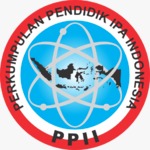Implementation of the GASING Method in Teaching Parabolic Motion: A Comparative Analysis of Learning Outcomes in Biology Education
DOI:
https://doi.org/10.29408/kpj.v8i3.28890Keywords:
GASING method, parabolic motion, biology education, interdisciplinary learning, pedagogical innovationAbstract
Teaching of physics concepts to non-physics majors presents significant challenges, particularly when it comes to helping students connect abstract physical principles with their primary field of study. This study investigates the effectiveness of the GASING (Graduated Assistance in Student-led Inquiry and Narrative learning through Guided experimentation) method in teaching parabolic motion to first-semester Biology Education students FKIP Universitas Mataram. Using a quasi-experimental design with two parallel classes (n = 54), we assessed the method’s effectiveness through pre- and post-tests, mini-projects, laboratory observations, and detailed student feedback questionnaires. Results demonstrated significant improvements in conceptual understanding, with mean scores increasing from 4.15 to 7.63 (Class D) and 7.56 (Class E), yielding a substantial effect size (Cohen’s d = 3.26). Both classes showed comparable performance in mini-projects (mean scores: 16.0/20 and 16.3/20). Student feedback across multiple engagement, clarity, and effectiveness measures consistently scored above 4.0/5. Statistical analysis revealed a significant correlation between student engagement and learning outcomes (r = 0.78, p < 0.001). These findings suggest that the GASING method effectively bridges the gap between physics concepts and biological applications while maintaining high student engagement and comprehension
References
Chiel, H. J., McManus, J. M., & Shaw, K. M. (2017). From biology to mathematical models and back: Teaching modeling to biology students, and biology to math and engineering students. CBE—Life Sciences Education, 10(3), 233-240. https://doi.org/10.1187/cbe.10-03-0022
Descamps, I., Moore, T., & Pollard, B. (2020). What is interdisciplinarity? Views from students and professors in a non-major intro physics course. arXiv:2005.05360 [physics.ed-ph]. https://doi.org/10.48550/arXiv.2005.05360
Fraser, J. M., Timan, A. L., Miller, K., Dowd, J. E., Tucker, L., & Mazur, E. (2014). Teaching and physics education research: Bridging the gap. Reports on Progress in Physics, 77(3), 032401. https://doi.org/10.1088/0034-4885/77/3/032401
Guiru Jia, Yuying Liu. (2019). The Realization of “College Physics” Teaching for Non-Physics Major Students. American Journal of Physics and Applications, 7(2), 43-47. https://doi.org/10.11648/j.ajpa.20190702.12
Guri-Rosenblit, S., & Gros, B. (2011). E-learning: Confusing terminology, research gaps, and inherent challenges. International Journal of E-Learning & Distance Education / Revue Internationale du E-Learning et la Formation à Distance, 25(1). Retrieved from https://www.ijede.ca/index.php/jde/article/view/729
Hunt, E. A., Fiedor-Hamilton, M., & Eppich, W. J. (2008). Resuscitation education: Narrowing the gap between evidence-based resuscitation guidelines and performance using best educational practices. Pediatric Clinics of North America, 55(4), 1025-1050. https://doi.org/10.1016/j.pcl.2008.04.007
Kimori, D. A. (2017). Integration of environmental issues in a physics course: 'Physics by Inquiry' high school teachers' integration models and challenges (ProQuest Dissertations & Theses No. 10256751). University of Minnesota. https://www.proquest.com/openview/815b21143402ef7afcfab64978ead77c/1?pq-origsite=gscholar&cbl=18750
Kirkup, L., Scott, D., & Sharma, M. (2012). Teaching physics to non-physics majors: Models extant in Australian universities. In Proceedings of the Science Teaching and Learning Research Including Threshold Concepts Symposium (pp. [page numbers if available]). Australian Conference on Science and Mathematics Education. https://openjournals.library.sydney.edu.au/IISME/article/view/6343
Kirkup, L., Varadharajan, M., & Braun, M. (2016). A comparison of student and demonstrator perceptions of laboratory-based, inquiry-oriented learning experiences. Chemistry and Learning, 24(2). University of Technology Sydney. https://openjournals.library.sydney.edu.au/CAL/article/view/9034
Kuo, E., Hull, M. M., Gupta, A., & Elby, A. (2012). How students blend conceptual and formal mathematical reasoning in solving physics problems. Science Education, 96(7), 1123-1146. https://doi.org/10.1002/sce.21043
Malicoban, E. V., Omra, J. S., Guinar, N. M., Acma, K. A. L., Go, G. P., & Mordeno, I. C. V. (2021). Qualitative study on difficulties of non-physics majors teaching physics: Basis for competency enhancement for teaching STEM. Journal of Physics: Conference Series, 1835(1), 012066. https://doi.org/10.1088/1742-6596/1835/1/012066
Martinuk, S., Clark, A., & Erickson, G. (2011). Re-conceptualizing the teaching of physics for non-majors: Learning from instructor-driven reform. In D. Corrigan, J. Dillon, & R. Gunstone (Eds.), The professional knowledge base of science teaching (pp. [page numbers if available]). Springer. https://doi.org/10.1007/978-90-481-3927-9_14
McIntyre, D. (2005). Bridging the gap between research and practice. Cambridge Journal of Education, 35(3), 357–382. https://doi.org/10.1080/03057640500319065
Nathan, M. J. (2012). Rethinking Formalisms in Formal Education. Educational Psychologist, 47(2), 125–148. https://doi.org/10.1080/00461520.2012.667063
Rakhshand, & Syifa Dafiyah. (2024). Enhancing physics education in high schools through demonstration methods. L’Geneus: The Journal Language Generations of Intellectual Society, 13(1), 35-45. Retrieved from https://iocscience.org/ejournal/index.php/geneus/article/view/5091
Redish, E. F. (2014). A theoretical framework for physics education research: Modeling student thinking. In Proceedings of the International School of Physics "Enrico Fermi" (Vol. 156, pp. 1–63). IOS Press. https://doi.org/10.3254/978-1-61499-012-3-1
Redish, E. F., Bauer, C., Carleton, K. L., Cooke, T. J., Cooper, M., Crouch, C. H., Dreyfus, B. W., Geller, B. D., Giannini, J., Gouvea, J. S., Klymkowsky, M. W., Losert, W., Moore, K., Presson, J., Sawtelle, V., Thompson, K. V., Turpen, C., & Zia, R. K. P. (2014). NEXUS/Physics: An interdisciplinary repurposing of physics for biologists. American Journal of Physics, 82, 368–377. https://doi.org/10.1119/1.4870386
Redish, E. F., Sawtelle, V., & Turpen, C. (2021). The role physics can play in a multi-disciplinary curriculum for non-physics scientists and engineers. arXiv:2101.12622 [physics.ed-ph]. https://doi.org/10.48550/arXiv.2101.12622
Sithole, A., Chiyaka, E. T., Manyanga, F., & Mupinga, D. M. (2020). Emerging and persistent issues in the delivery of asynchronous non-traditional undergraduate physics experiments. International Journal of Physics and Chemistry Education, 12(1), 1–7. https://doi.org/10.51724/ijpce.v12i1.86
Uhden, O., Karam, R., Pietrocola, M. et al. Modelling Mathematical Reasoning in Physics Education. Sci & Educ 21, 485–506 (2012). https://doi.org/10.1007/s11191-011-9396-6
Verawati, N., & Purwoko, A. (2024). Literature Review on the Use of Interactive Labs Technology in The Context of Science Education. International Journal of Ethnoscience and Technology in Education, 1(1), 76-96. doi:https://doi.org/10.33394/ijete.v1i1.12154
Downloads
Published
Issue
Section
License
Copyright (c) 2024 Kappa Journal

This work is licensed under a Creative Commons Attribution-ShareAlike 4.0 International License.
Semua tulisan pada jurnal ini menjadi tanggungjawab penuh penulis. Jurnal Kappa memberikan akses terbuka terhadap siapapun agar informasi dan temuan pada artikel tersebut bermanfaat bagi semua orang. Jurnal Kappa dapat diakses dan diunduh secara gratis, tanpa dipungut biaya, sesuai dengan lisensi creative commons yang digunakan








